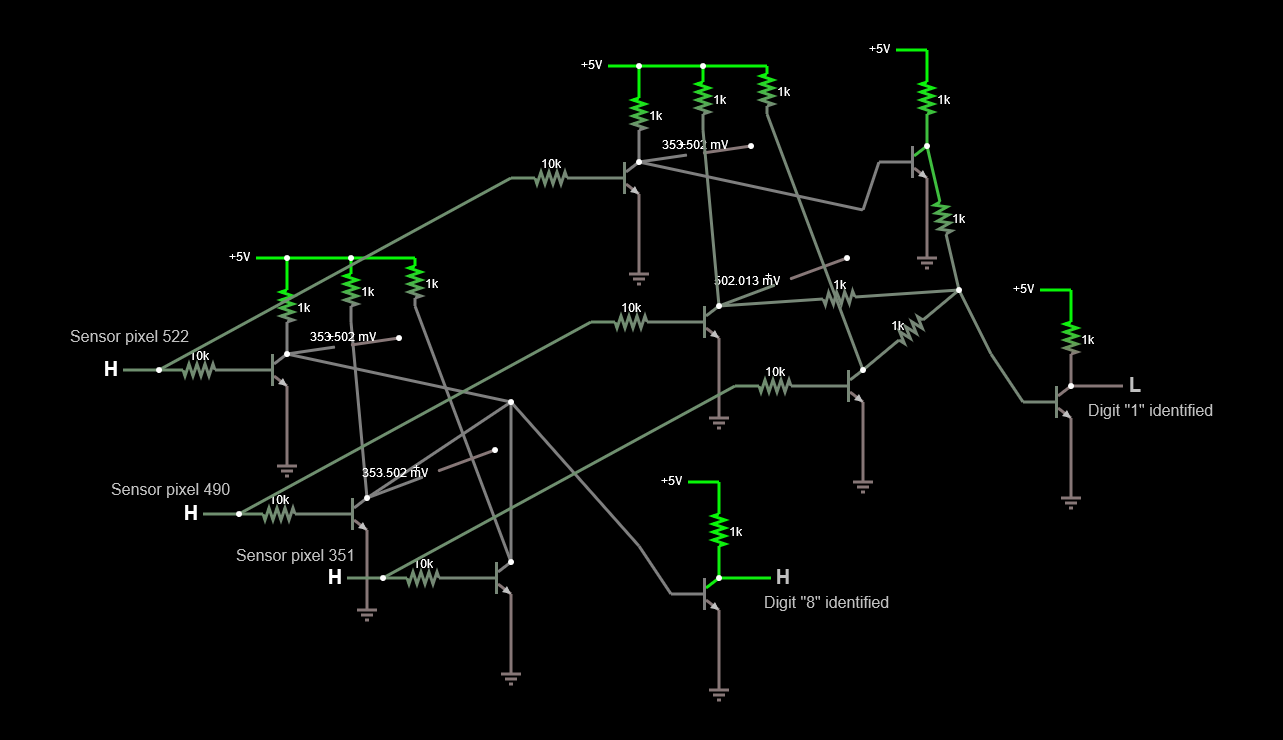The goal of this task is to actually make the digital implementation work.
Forget Mr. Fields
So, I had a go at the why the previous circuit was not working, and I found out it was just messed up in so many dimensions it's hard to name them.
In the end, I spent a lot of time learning, which I think that's what projects are for. I've got a much better grasp about the behaviour of NPN transistors and RTL, previously all dark arts for me.
The circuit below describes the actual implementation of the left arm of the above decision tree implemented with RTL. I couldn't attach the circuit file, something wrong with the HAD.io platform today.

So, implementation via RTL is possible, but a PIA, even for simple trees. Even locked up at home with nothing better to do.
A much better solution would be to implement this via e.g. 74AS logic gate circuits. These have a theoretical propagation time of 2ns for the faster chips. The most complex decision tree discussed in the Bonus Track log, was 11 levels deep. That means that adding up the times of all the gates, the response time would be of 22 ns, or a detection frequency of 40 MHz. This does not tell the whole story since half of these would have to carry inverters on the way, but still, not very far off from these numbers. Not bad for a bunch of transistors.
Conclusion
Finally we have reached the point where we have managed to implement both analog and digital solutions to the Discrete Component Object Recognition System.
From an implementation point of view, the digital solution is the most robust, the fastest one and the one least likely to cause headaches. It's also the most forgiving in terms of sensors since it can readily work with LDRs, despite their relatively slow response time.
Future work
Well, wouldn't it be nice if more complex images could be recognized instead of just the MNIST numbers? What about cats and dogs?
Discussions
Become a Hackaday.io Member
Create an account to leave a comment. Already have an account? Log In.